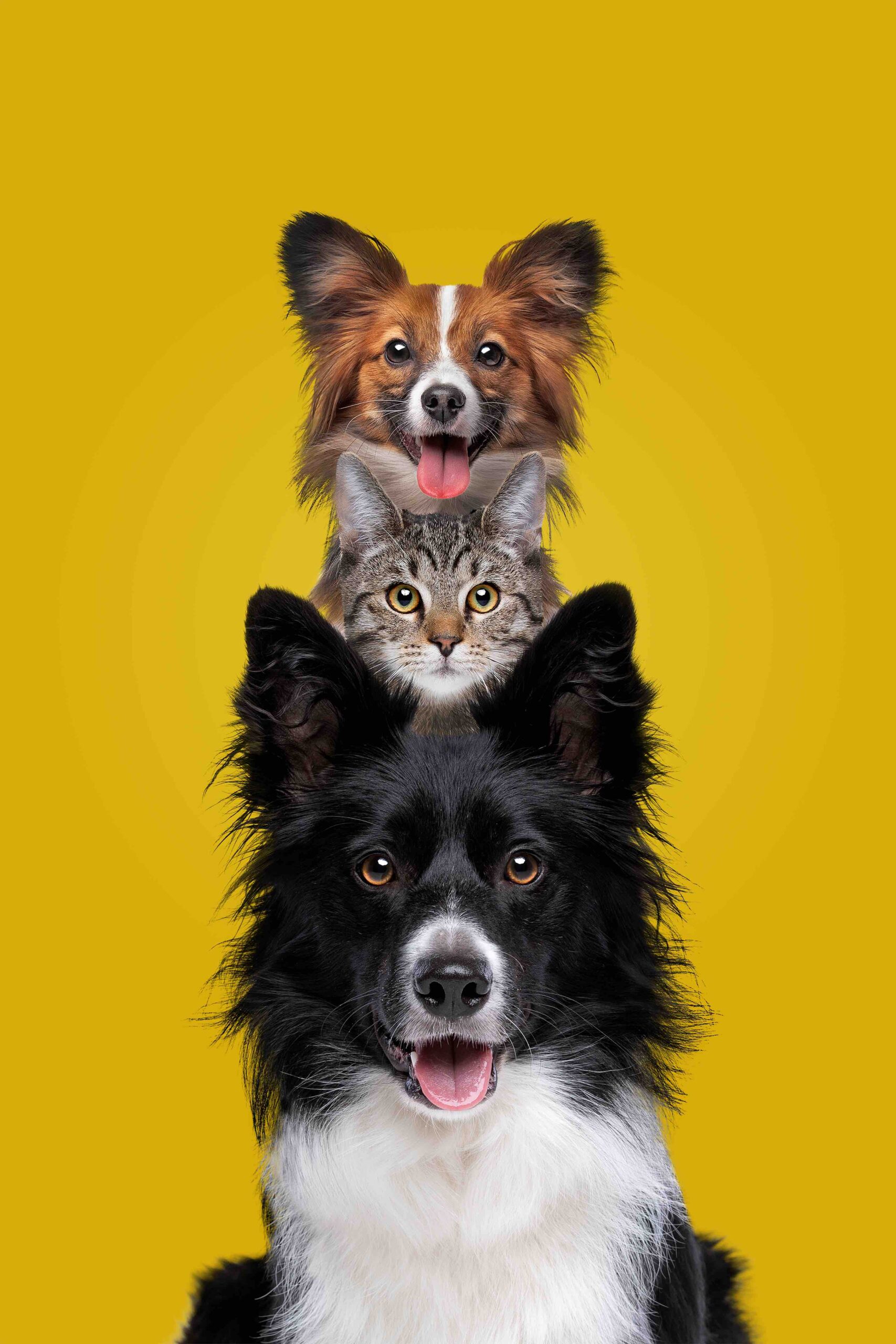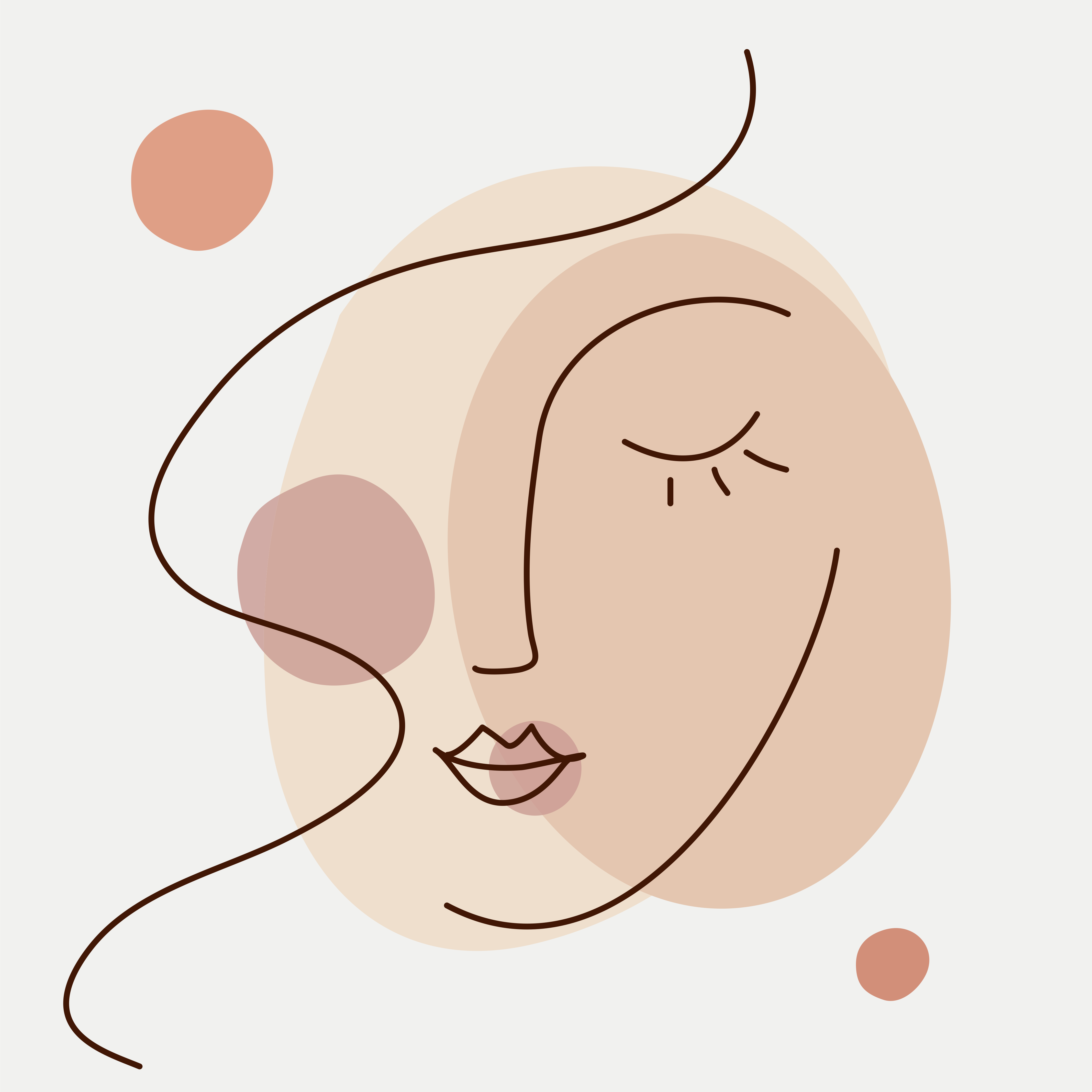Dog and cat behaviour experts share how to look after your pets and how to tell when they’re happy.
Happiness is what most people want for their pets but often what we think is best does more harm than good.
If your dog is happy, it’s relaxed and calm, says Selina McIntrye. She’s speaking from experience, as she runs a dog behavioural consultancy and dog training business, Dogs Best Friend, in Waikato where she lives with her family – her husband, two kids and two border terriers, Trev and Lily, as well as a mostly tolerant black-and-white moggy, Isobelle.
She’s also the author of Big Dog, Small Dog: Make Your Dog Happier by Being Understood.
An animal lover, she started out working with cats as a teen – lions, in particular, at a local wildlife park – but decided to make her career working with dogs because it was an area where she felt she could do the most good. Subsequently, she’s worked with thousands of dogs.
“So many people have dogs but are not doing things the right way,” McIntrye explains. “There’s a real lack of knowledge around dogs and it’s so easy to own a creature and be in charge of their wellbeing. Before you get a dog you should be getting as much knowledge as possible so that right from the get go, you’re starting off on the right foot.”
Over the course of the pandemic, 3.2 million homes across the UK welcomed a new pet into their lives. The trend followed in New Zealand. In December 2021, lockdown puppies and dogs were being abandoned in record numbers, prompting dog rescuers to urge people to think twice about getting a pet.
Chained Dog Rehabilitation and Rehoming in Auckland had 50 people fill out a lengthy application for their dog’s rehoming – and that number doesn’t include the many more who emailed or messaged but couldn’t be bothered with the form.
Usually, it receives 10 to 15 applications at this time of year. One of the reasons cited for rehoming was that most of the dogs had some form of lockdown behavioural issue that people couldn’t be bothered with, founder Amanda Fraser-Jones told Stuff. This included separation anxiety, which presents through various destructive behaviours like digging, destroying stuff and pining when left at home alone.
Generally, dogs were overjoyed to have their owners home during lockdown, unlike some cats, who wished you’d just go back to the office, according to an Australian survey. When everyone started going back to work, cats were relieved, while many dogs were losing it.
There’s no overnight fix for separation anxiety but this is where McIntyre can help. Dogs can be trained out of it, and if owners are armed with the right knowledge before getting a dog, it is also preventable.
Common mistakes people make that contribute to a dog’s unhappiness are not socialising them during the critical socialisation period, choosing an animal that doesn’t suit their lifestyle and therefore not providing enough mental or physical exercise and babying their dogs.
Selina McIntyre’s guide for a happy dog
Don’t buy on a whim
You’d be surprised by the number of people that fall in love with a dog at the pet store and take it home the same day, even though they hadn’t planned
on buying a pet.
Talk to your vet or someone like me before getting a dog. Research the best breed/breed mix that will suit your lifestyle, including what’s actually required for exercise and mental stimulation for that animal. Obtaining knowledge about the critical socialisation period is vital also.
What to consider before getting a pet
Firstly, take a good look at whether the great majority of the time, you can fulfil your dog’s mental as well as physical needs, actively working on enrichment
and exercise.
As well and as part of this, consider the cost involved in the care of the animal.
This may involve the use of a boarding kennel or doggy day care. A doggy day care is particularly beneficial for a solo dog, to help with his or her social needs. And, will you be able to keep and provide for your pet for their lifetime (14 years on average)?

Separation anxiety
If your dog whines when you leave the house or room, the first thing you should do is a vet check to rule out any medical issue. After this, your social dynamic will have to be looked at, perhaps “reversing your roles” within the pack – so as to relieve your dog of the burden of responsibility for you (their “baby”).
People often say to me that their dog is “missing mummy or daddy” but an easier way to think about it is the dog is missing his or her babies and that blows people’s minds. Your dog is worrying about you when you go because they are literally pining for a lower-ranking pack member (you). Their baby’s gone off, they don’t know when you’re coming home and they’re anxious from that perspective.
Overcoming separation anxiety
Give your dog a longer-lasting enrichment treat – say a stuffed and frozen Kong toy (then it’s like an ice block and it takes them a lot longer to get the meat out).
Don’t make a big deal of your arrival or departure. Keep it low-key. You don’t want your dog to be over-excited about your return. Pent-up energy has been linked to tension and anxiety. Ensure your dog’s mental and physical needs are always being met but particularly address this before going out.
Make things unpredictable. Put on your shoes and pick up your keys but hang out the washing for example.
Anxiety aides
Use an anxiety wrap. A cloth vest acts like swaddling and mimics a hug by activating acupressure points that help the body produce the feel-good happy hormone serotonin. It doesn’t look like much, but I recommend them to clients because I’ve had a lot of success with them. In summer you can soak it in water, so that it is also cooling for your dog.
Create a doggy den. Use a crate to create a small, cosy den by covering it with a blanket, or an igloo-type bed. Don’t have a crate that’s too big otherwise that defeats the purpose. When it’s too big an area, they’re more likely to be anxious because you’ve given them a bigger area that they have to patrol and protect.
Play relaxing doggy music. Download the soundtrack “Through a Dog’s Ear”, classical music developed by scientists that has had the high and low frequencies removed. It has shown great calming results in studies.
Introduce periods of separation, slowly. Increase the distance and/or time of your separation. It’s important to start out slowly. Fifteen minutes is very different
to one hour!
Dogs are body language masters
Dogs do the vast majority of their communication with their bodies – their tail, body and ear movements. Vocalisation is very much a minor form of communication for them.
With this, dogs then have a heightened ability to read the body language of others – including ourselves. For instance – dogs look at how happy we are by looking at our face and body actions. Everything is looked at for a consistent message. Praise words need to come with a pleased expression.
Saying “no”
Dogs growl each other, so I don’t use the word “no”. It’s more of a growl, like an “ah!” or a “bah”. You’re trying to get a really deep guttural noise, whereas most people say “no” which doesn’t sound anywhere near as effective to a dog.
Fear versus aggression
Fear often gets mistaken for aggression. If you’re fearful they’ll react to your reactivity. The majority of dogs communication is through body language as opposed to vocalisations. Their skill at reading that behaviour in another dog is so heightened that they can read us like a book. They care more about the tone of how something is said. You could be swearing at them in positive way and they’re like “yay!”
Why you shouldn’t baby your dog
They are not furry humans. Owners who don’t treat their dog as a dog are doing their dog a disservice. By not treating them like a dog you are not understanding them or catering to their needs and you create a lot of problems. The dog is a dog and they’re enough as they are.
With this, you should be looking to interpret your dog’s behaviour in a situation from their perspective. For example, a bored or frustrated dog is not chewing out of spite!
Socialisation
A common issue I come across is reactivity to other dogs, vehicles and certain people. This is because when the dog in question was in the critical socialisation period in its early development, it wasn’t exposed to these things so it perceives them as threatening because they are unknown, and this creates a fear response. There’s no limit to how much socialisation you can do. For example, wear stupid hats, stand outside shops where different looking people enter, etc.
Dog schools
If you discover a great school, go for it! However, do your research. You can have under socialisation without puppy school but often schools can be poorly run with inadequately qualified people which does more harm than good.
Physical and mental wellbeing
Many people choose dogs on looks and because of their lack of knowledge don’t appreciate how much exercise they need. Ninety-eight per cent of my clients don’t exercise their dogs enough.
The way we live now is not optimal for dogs. I still get owners who say “I’ve got a big property. I don’t need to take my dog for a walk” but that’s not the way dogs work. They exercise as a pack, so they’ll generally sit by the gate all day and wait for the pack (you) to come home.
All dogs need exercise twice a day to break up the monotony that we’ve created by just plonking them out in a yard or apartment. There’s not enough in our physical environment that stimulates them mentally or gets them working physically so getting them out twice a day is just as much about the mental as the physical. For small dogs that might be 20 minutes, twice a day.
One hour for larger breeds. And, if you have a border collie you should run that dog, not walk it. If these needs aren’t met, you’re going to get an anxious dog and destructive behaviour like chewing and barking.

Build a den
Dogs are den-dwelling animals, so a crate covered with a sheet in summer or a blanket in winter, or an igloo-type bed is great. Put these away from the hustle and bustle of the main living area or have two beds, so your dog can truly rest. It’s not nice to ask them to rest when the TV is blaring in the background.
A bed to lie on
It’s also important to provide a good bed. A bed with cushioning helps in the prevention of arthritis.
Inside or outside
I believe dogs want and should be inside with the rest of their family/pack. Dogs are extremely sociable creatures and they would definitely become lonely if left outside by themselves.
Puppies versus rescue dogs
The rescue dog can come with “baggage” or, alternatively, a solid positive ground in some scenarios.
For example, they may have been brought up positively around children. We do sometimes need to try to fill in the blanks as best we can about possible experiences of the rescue dog, from behaviours present now and move forward with these.
Puppies can have bouts of high energy. They are like a sponge, inquisitively absorbing all that’s going on around them. For this reason, it pays to surround puppies with positive, enriching experiences that help them learn and become socialised (and tire themselves out!).
Little dog syndrome
Little dogs can annoy the heck out of big dogs. Why? It’s the way little dogs are often treated to give them the impression that they are the king of the playground and thinking they’re 10 feet high, particularly those that are picked up a lot because they then view the world from a higher perspective.
Clickers
I don’t use clickers, though I’m not inherently against them, it’s just adding in a step for me. The thinking behind clickers is when a dog does a behaviour that you want, you click and at the same time give a reward so that when they hear the click they begin to understand the behaviour they are supposed to be doing.
Gadgets
I prefer to get to the root of the problem and provide long-term solutions. I don’t do band aid, which means I don’t do gadgets. An e-collar can temporarily stop a behaviour, but long term it doesn’t.
Diet
A balanced diet is key. Complete commercially prepared raw mix or biscuits are a good choice. It can be hard to meet your dog’s needs with home leftovers.
How do you know a dog is happy?
There are no major behavioural issues in the adult dog – no excessive barking, chewing, digging. These are signs of pent-up energy and possibly anxiety. Also, your dog sleeps soundly – not with one ear, one eye open, on the alert. Your dog is relaxed enough to go off on their own on your property and “do their own thing” – not stuck to your side like a “velcro-dog”. We also look for a relaxed mouth – not closed and tight-lipped – and relaxed ears, body and loose tail.
Something to woof about
When it comes to sleep, Life of Riley dog beds are a dog’s best friend.
Made with New Zealand wool, they have many therapeutic benefits for dogs post-surgery or with arthritis, partly because they’re getting a better-quality sleep as well as being more supportive.
Wool also breathes more naturally than synthetics, doesn’t smell, regulates body temperature and naturally repels dust mites.
Founder Amanda Hollier, who has three dogs, began making her own dog beds with wool after getting fed up with dog beds falling apart. At the time, she was living on an alpaca farm and used alpaca wool for her prototypes. The dogs loved them and she realised she was onto something. Plus, it was a sustainable alternative. “I wanted to create a dog bed that was durable, comfortable and sustainable,” says Hollier.
Life of Riley also makes bed pods, snuggle sausages that dogs can rest their heads on, crate bumpers for extra comfort, and has just launched organic cotton fleece blankets.

Why I wrote Cats Work Like This: A Q&A with author Gareth St John Thomas.
Cats are a joy in millions of people’s lives and knowing how to look and properly see their behaviour can bring more delight into life. Cats Work Like This fills the gap between prettily written biographies of cats and cat life and care advice manuals. I want to help people enjoy their cats more with a little observation and understanding, and of course, laugh out loud!
What makes cats happy?
Cats are complicated, emotional, affectionate, fearful and full of surprise and joys. If you know how they think, and that includes what they might think about you, both you and your cats will have happier lives.
One key thing to be always aware of is that your cat lives in a different world to yours. His or her world is full of risks and dangers. It is imperative that your cats have a choice of safe, dry, high and totally secure places to which they can always retreat. Once your cat has this unassailable base, their life is secure and time for play, companionship and affection enhanced.
Some key advice
An important thing that some people neglect is that cats do need to be left alone. Though you should always be available to them the reverse does not always apply. Unlike dogs, cats do not want to be an extension of you. A happy cat can spend nearly all their life with you – but on their own terms, thank you – not yours! Cats are of course more complicated than dogs, too, and like to figure things out for themselves.
There is a fun chapter in the book on “the scientific cat” which explores some entertaining examples of feline empirical research. Cats do share with dogs much better and cats are believed to have fourteen times better hearing than you and me. So, keep the noise down when you can!
Cats and lockdowns. Did they feel crowded or do they do well at home?
Sadly, I am currently without a cat. I’ve just moved to Whanganui and will shortly be going to the SPCA and adding to the 1.2 million domestic cats within New Zealand. The number of pet cats increased during our lockdown periods and lockdowns bought their own issues for cats.
Thunder and Lightning, two Egyptian Maus featured in the book, were outraged when their humans failed to leave the house after a few days.
They assumed that the humans had forgotten their routines and tried to shepherd them, sometimes noisily out of the front door. In part this is about the two cats’ agreements on territory. Quite often, cats in households and neighbourhoods appear to have rights on the same piece of territory, such as, say, the stairs, for different parts the day.
The whole arrangement would of course be upset by humans clomping up and down them when they were supposed to be at work. But by and large, cats with caring owners did well out of lockdowns. The humans kept their homes warmer, there was more time to be had with them and, when they wanted them, there were more laps available.
What do I love most about cats?
Of course, the idea of definitively saying how cats work is farcical and that’s what I love most about cats. We have shared our lives with them for around 10,000 years but they are still surprising and different, and as well as being affectionate company, their capacity to amaze and surprise never ends.





